Alkonost – Mythical Bird Of Paradise In Slavic And Russian Folklore
A. Sutherland - AncientPages.com - Alkonost is a sacred bird in the mythology of the Slavic people and one of the famous characters in Slavic myths and legends.
The creature has been portrayed as a beautiful bird with the head of a young maiden.
Alkonost. Russian Lubok of 18–19th Century. source
These mythical beings hypnotized people with powerful, beautiful singing and filled their hearts with love, joy, and happiness. Their perfect song had enough power to stop a war, while in another version, Alkonost's role is to torment the souls of the damned by singing terrible songs and giving them no rest.
Alkonost is believed to represent Bog Hors (Khors), the Light bird of joy in the 4-dimensional World of Yav' that surrounds us and contains people and other living beings.
Initially, Alkonost lived in the pagan Russian paradise on a mysterious island in the ocean. This island, known as Buyan, could appear and disappear using tides.
 Viktor Vasnetsov's Sirin (left) and Alkonost (right) Birds of Joy and Sorrow (1896).
Viktor Vasnetsov's Sirin (left) and Alkonost (right) Birds of Joy and Sorrow (1896).
Alkonost is sometimes mistaken for Sirin, another of the Russian folk figures, also a resident of the underground world. The two resemble each other, but Alkonost was traditionally a bird of sorrow and melancholy. However, Sirin (a bird of joy and success) is Alkonost's sister's spirit and alter ego.
A long time ago, these two beings (probably introduced by traders from Persia in the 8th or 9th century) were considered sacred birds of fortune and adored side by side as powerful protective spirits. Alkonost guards good luck by day while Sirin does it at night. In old times, entrances to cottages of Russian peasants were traditionally decorated with carved wooden images of Alkonost and Sirin.
The origin of Alkonost probably derives from Greek myths that associate Alkonost with the Greek goddess Alcyone, who was transformed into a kingfisher.
During the winter, the mythical bird lays the eggs on the seashore and then rolls them to the bottom of the sea. The sea remains calm at that time, but after seven days, when the eggs hatch, heavy storms wreak terrible havoc, and the sea becomes extremely dangerous and impossible to traverse.
Therefore, in old Slavic beliefs, people made Alkonost responsible for the climate and the weather. The creature also had the power to calm storms and even the most furious hurricanes with the sound of her song.
In some beliefs, the eggs of Alkonost have a very symbolic meaning and represent the 'Wisdom of the World of Prav' that the bird shares with people living in the world of Yav (our world).
Bird Alkonost - Ivan Bilibin (1905). Credit: Public Domain
Like other mythological birds in Slavic legends and tales, Alkonost played an essential role in Russian folklore, even after adopting Christianity in 988.
As in many places, Christianity was not immediately accepted, and various pagan ceremonies were still practiced.
The early Christian church and many missionaries ordered the destruction of all pagan idols and sacred groves. It was an attempt to erase the pagan tradition.
Eventually, Christianity was forced to accept many ancient pagan deities and mixed them with Christian symbols, including depictions of beautiful mythical creatures in the form of half-women and half-birds.
Alkonost was 'relocated' from the magical island Buyan to the Garden of Eden. She served as God's messenger, traveling to Earth to sing beautiful songs to saints, foretelling their happy future in paradise.
Under the strong influence of Christian and old pagan beliefs, Alkonost and other fabulous birds became patrons of the Slavs, who considered them divine beings with extraordinary powers or even archangels from paradise.
Today, images of divine half-birds and half-women remain in Russian folklore and the Russian Orthodox Church tradition as creatures personifying God's will.
Written by – A. Sutherland - AncientPages.com Senior Staff Writer
Updated on January 24, 2024
Copyright © AncientPages.com All rights reserved. This material may not be published, broadcast, rewritten or redistributed in whole or part without the express written permission of AncientPages.com
Expand for referencesMore From Ancient Pages
-
 Elli – Norse Goddess And Symbol Of Old Age That No One Ever Could Defeat
Featured Stories | Dec 21, 2017
Elli – Norse Goddess And Symbol Of Old Age That No One Ever Could Defeat
Featured Stories | Dec 21, 2017 -
 Similarities And Differences Between Living Spaces Of Neanderthals And Homo Sapiens
Archaeology | Apr 9, 2024
Similarities And Differences Between Living Spaces Of Neanderthals And Homo Sapiens
Archaeology | Apr 9, 2024 -
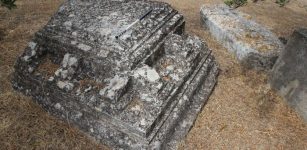 LIDAR Disovers 2,000-Year-Old Roman Temple Under Church In Danilo, Croatia
Archaeology | Dec 6, 2022
LIDAR Disovers 2,000-Year-Old Roman Temple Under Church In Danilo, Croatia
Archaeology | Dec 6, 2022 -
 On This Day In History: Battle Of Dettingen – English Armies Were Victorious Over The French – On June 27, 1743
News | Jun 27, 2016
On This Day In History: Battle Of Dettingen – English Armies Were Victorious Over The French – On June 27, 1743
News | Jun 27, 2016 -
 On This Day In History: Emperor Romulus Augustus Deposed – On September 4, 476
News | Sep 4, 2016
On This Day In History: Emperor Romulus Augustus Deposed – On September 4, 476
News | Sep 4, 2016 -
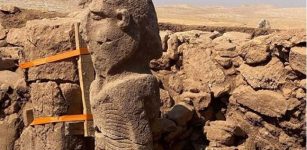 World’s Oldest Human Statue Discovered At Karahan Tepe, Turkey
Archaeology | Oct 30, 2023
World’s Oldest Human Statue Discovered At Karahan Tepe, Turkey
Archaeology | Oct 30, 2023 -
 Schoolboy Finds A Huge 3,000,000-Year-Old Megalodon Shark Tooth On British Beach
Archaeology | May 9, 2022
Schoolboy Finds A Huge 3,000,000-Year-Old Megalodon Shark Tooth On British Beach
Archaeology | May 9, 2022 -
 Fascinating Ancient And Unexplained Mysteries Of Arizona – Strange, Unknown Creatures, Baffling Vanishings And Anomalies – Part 2
Featured Stories | Oct 1, 2024
Fascinating Ancient And Unexplained Mysteries Of Arizona – Strange, Unknown Creatures, Baffling Vanishings And Anomalies – Part 2
Featured Stories | Oct 1, 2024 -
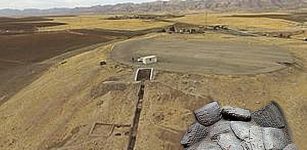 Bassetki Cuneiform Tablets Reveal Location Of Lost City Of Mardaman In Northern Mesopotamia
Archaeology | May 14, 2018
Bassetki Cuneiform Tablets Reveal Location Of Lost City Of Mardaman In Northern Mesopotamia
Archaeology | May 14, 2018 -
 Our Early Ancestors Probably Created Intricate Artwork By Firelight
Archaeology | Apr 21, 2022
Our Early Ancestors Probably Created Intricate Artwork By Firelight
Archaeology | Apr 21, 2022 -
 Ara Pacis: Altar In Rome Dedicated To Pax, The Roman Goddess Of Peace
Ancient History Facts | Apr 4, 2016
Ara Pacis: Altar In Rome Dedicated To Pax, The Roman Goddess Of Peace
Ancient History Facts | Apr 4, 2016 -
 Shieldmaiden Hervör’s Dangerous Quest For The Cursed Tyrfing Sword
Featured Stories | Apr 20, 2023
Shieldmaiden Hervör’s Dangerous Quest For The Cursed Tyrfing Sword
Featured Stories | Apr 20, 2023 -
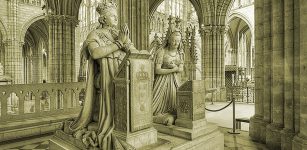 On This Day In History: King Louis XVI Of France Was Formally Arrested And Declared An Enemy Of The People – On August 13, 1792
News | Aug 13, 2016
On This Day In History: King Louis XVI Of France Was Formally Arrested And Declared An Enemy Of The People – On August 13, 1792
News | Aug 13, 2016 -
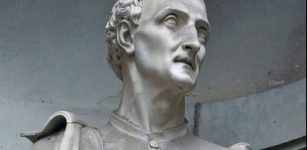 On This Day In History: Explorer Of The New World Amerigo Vespucci Born – On Mar 9, 1451
News | Mar 9, 2017
On This Day In History: Explorer Of The New World Amerigo Vespucci Born – On Mar 9, 1451
News | Mar 9, 2017 -
 Njord: Norse God Of The Seas And Seafarers And His Unhappy Marriage To Skadi
Featured Stories | Jul 10, 2018
Njord: Norse God Of The Seas And Seafarers And His Unhappy Marriage To Skadi
Featured Stories | Jul 10, 2018 -
 Oldest Houses Of Nea Paphos In Cyprus – Discovered
Archaeology | Apr 12, 2017
Oldest Houses Of Nea Paphos In Cyprus – Discovered
Archaeology | Apr 12, 2017 -
 Extremely Unique Ancient Roman Arm Guard Found At Trimontium Fort – Restored And On Display For The First Time Ever
Archaeology | Jan 22, 2024
Extremely Unique Ancient Roman Arm Guard Found At Trimontium Fort – Restored And On Display For The First Time Ever
Archaeology | Jan 22, 2024 -
 First Discovery Of A 127-Million-Year-Old Side-Necked Turtle Fossil In UK
Fossils | Jun 13, 2023
First Discovery Of A 127-Million-Year-Old Side-Necked Turtle Fossil In UK
Fossils | Jun 13, 2023 -
 Ancient DNA Reveals Irish Are Not Celts – Irish Ancestors Came From Biblical Lands – Scientists Say
Archaeology | Mar 30, 2020
Ancient DNA Reveals Irish Are Not Celts – Irish Ancestors Came From Biblical Lands – Scientists Say
Archaeology | Mar 30, 2020 -
 Mysterious Mythical City Found In One Of North America’s Beautiful National Parks
Featured Stories | Feb 25, 2025
Mysterious Mythical City Found In One Of North America’s Beautiful National Parks
Featured Stories | Feb 25, 2025


